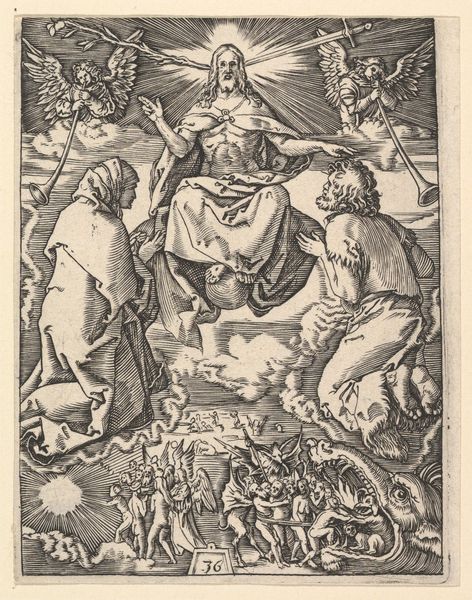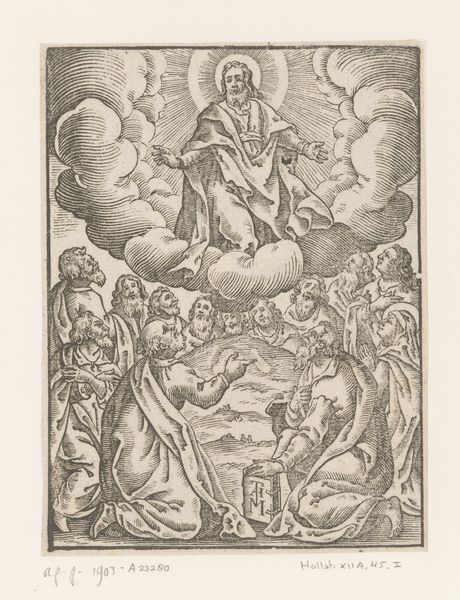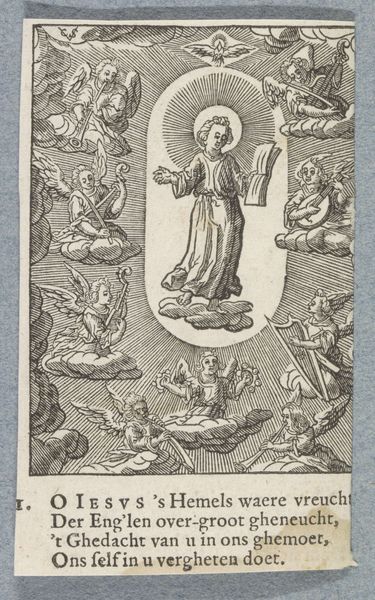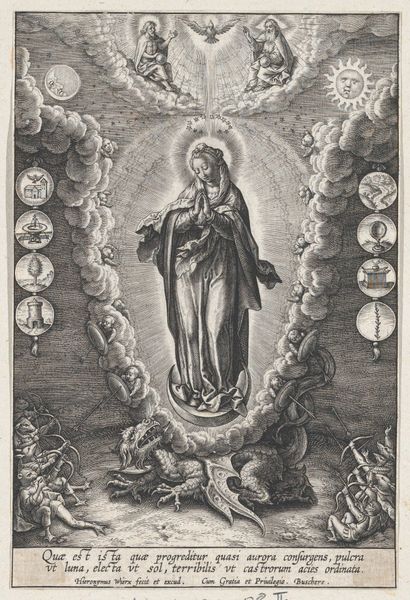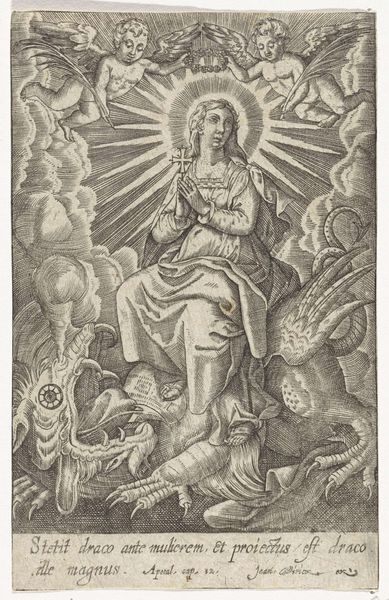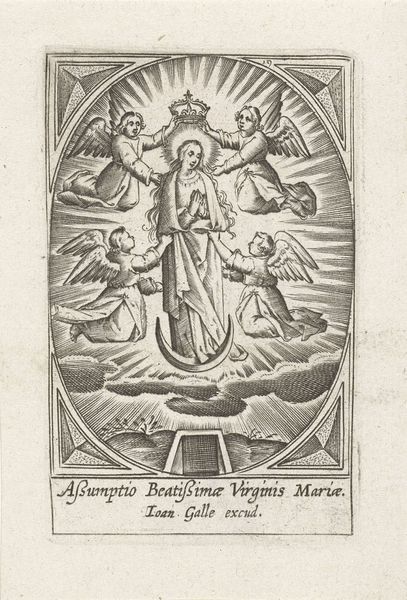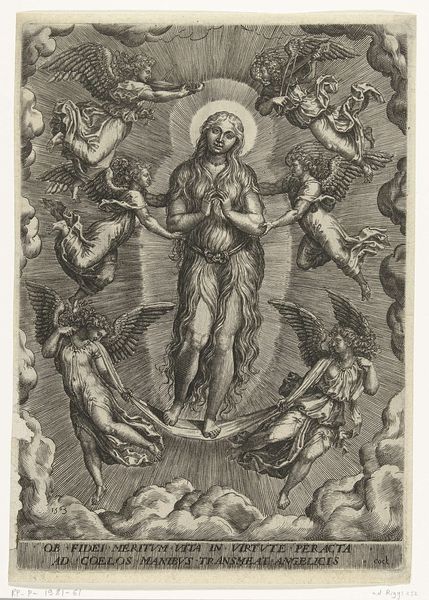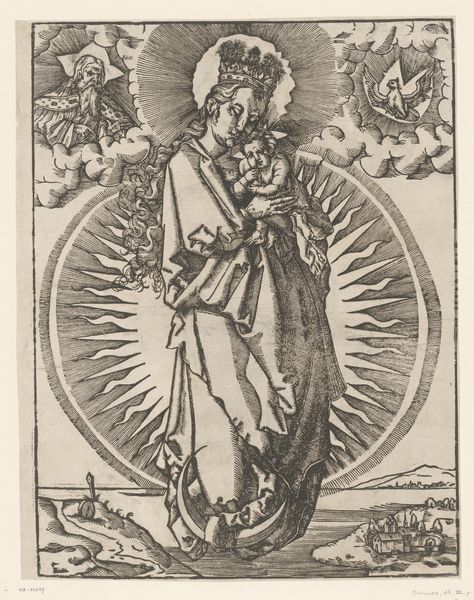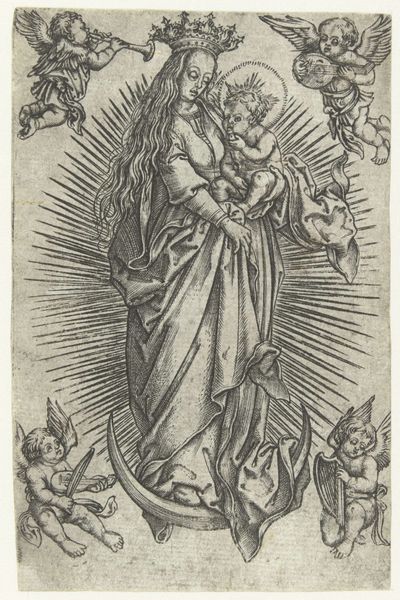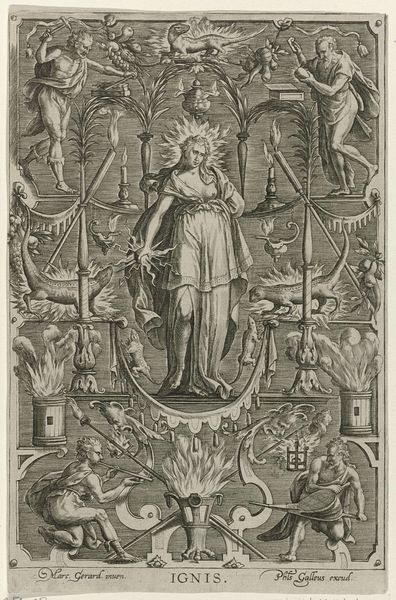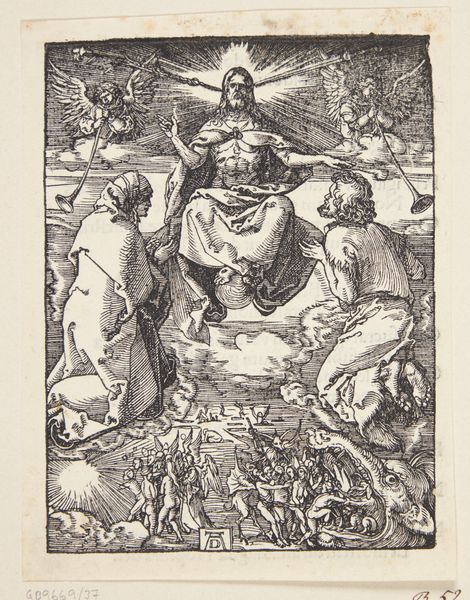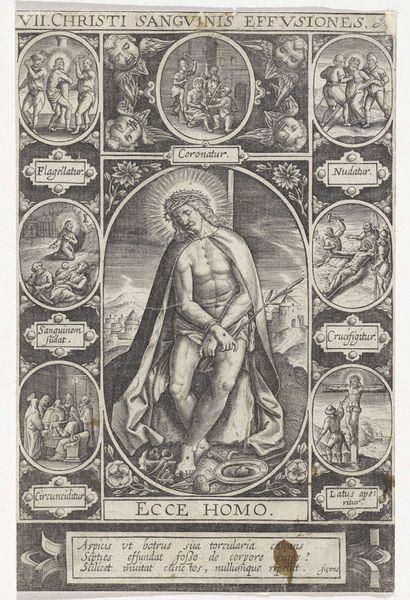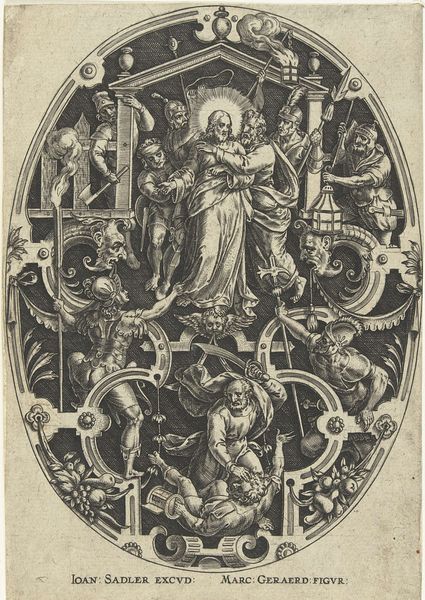
print, engraving
#
allegory
# print
#
figuration
#
line
#
history-painting
#
northern-renaissance
#
engraving
Dimensions: height 111 mm, width 77 mm
Copyright: Rijks Museum: Open Domain
Curator: Let’s examine "Hemelvaart van Maria," a print created sometime between 1595 and 1633. Editor: It’s striking! The ascension is rendered with incredible precision, the lines creating a sort of swirling energy around the central figure. The angels almost look like they are carrying her upwards in this delicately engraved scene. Curator: Precisely. What we're seeing here is an engraving, likely by a member of the Wierix family, given its Northern Renaissance style. Note the allegorical elements, such as the dove at the very top, which create an intensely devotional atmosphere. Editor: The landscape below is interesting as well, contrasting the earthly and divine realms, wouldn’t you say? How does this imagery serve its audience? Curator: It is a carefully crafted religious statement for its time. The print presents the Virgin Mary’s ascent in an idealized way meant to evoke deep emotion and underscore her divine grace. The text in the bottom—likely Latin, which would indicate this was directed toward wealthy literate nobles–affirms this, literally spelling out Mary's blessed company during the Virgin’s rise into Heaven. The scale and linear execution of the design underscore this clear message and refined sense of control. Editor: Yes, I see what you mean about control! However, the emotional impact seems, for me, slightly muted, perhaps due to its being a print, rather than an illuminated manuscript. But knowing this would be used for devotional practice definitely deepens how one appreciates it today. Curator: Exactly. It highlights how religious concepts were visualized and circulated to reinforce doctrine. I think looking at its composition helps to consider its historical usage. Editor: And I appreciate understanding its role as a physical object—its method of construction and circulation—contributed to a rich history of Northern Renaissance art.
Comments
No comments
Be the first to comment and join the conversation on the ultimate creative platform.
